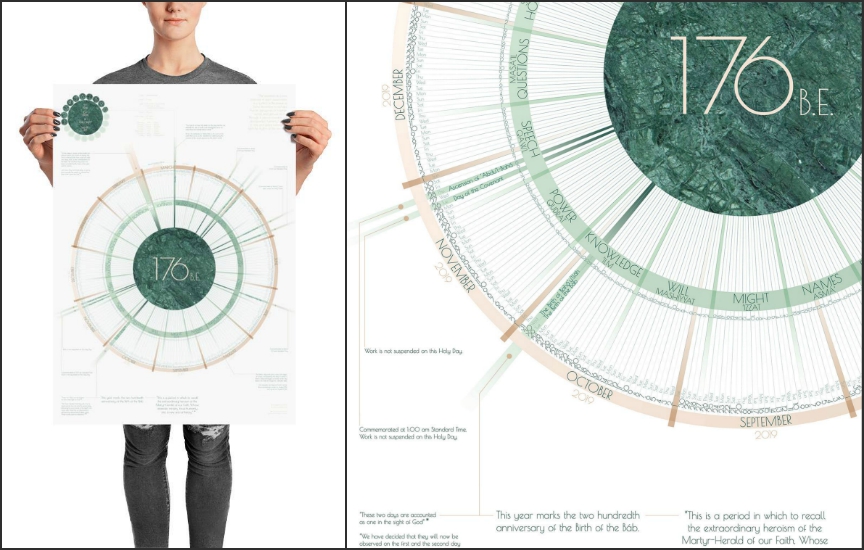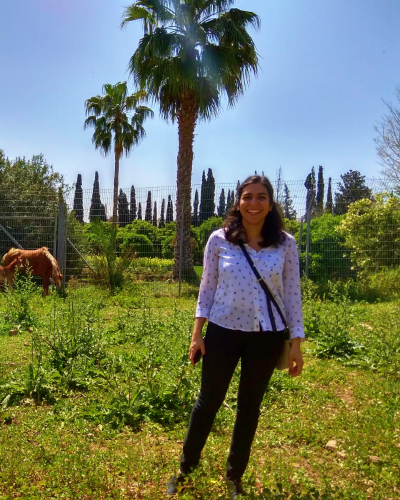Highlighting Australia
- As a proudly Australian initiative, we’re excited to showcase a collection of Australian stories, music, tributes and more.

Join activities, celebrations, study groups, spiritual empowerment and education programs for young people, and more.
Baha’i beliefs address essential spiritual themes for humanity’s collective and individual advancement. Learn more about these and more.


A friend recently brought to my attention the beauty of the Baha’i calendar, or the Badi calendar. A few days later I found myself talking about the calendar to someone else who asked me what day and month it was and I’m sorry to admit, I was really caught off-guard. I’ve been teaching my children Jack Lenz’ “Song of the Months” but other than that, we haven’t sufficiently integrated the Baha’i months and days of the week into our lives: Monday to Friday is significant to our family, but we have yet to see the work and school week in terms of Kamal to Istiqlal.
I was excited to see that Roya Mottahedeh has produced another circle Baha’i calendar in honor of this new year, 176 BE. This is her third year designing a stunning circular calendar and I wanted to learn more about the process behind making this calendar and how she approached it. Here’s what Roya shared with me:
I’m Canadian (from Calgary, but most recently lived in Toronto) and am currently volunteering at the Baha’i World Centre in Haifa.
I trained as an architect, and have worked in the field for several years, mostly on institutional or cultural projects.
I was mostly trying to wrap my head around how the Badi calendar (sometimes also referred to as the Baha’i Calendar) worked, how the significant dates, like Holy Days and Feasts, line up throughout the year. In 2014, the Universal House of Justice wrote a message to the Baha’is of the World announcing the common implementation of the Badi calendar. They wrote:
“The setting of the sun on 20 March 2015 will signalize the end of the year 171, the close of the ninth Vahid of the first Kull-i-Shay of the Baha’i Era. We call upon the Baha’is of the East and West to adopt, on that auspicious occasion, the provisions that will unite them in the common implementation of the Badi calendar.”
To be honest, although I was struck by this clearly significant announcement, not much of this made total sense to me, especially the parts later on in the message about the “lunar character of the Twin Holy Birthdays”, whereas the rest of the calendar is tied to the solar calendar.

The way I usually figure things out is through visual representation, and the calendar lends itself well to some of these questions. I am also very bad at remembering dates, and thought this might help. So, I started researching and designing different types of representations of time and information.
One of my main goals was to represent the Gregorian and Badi calendar simultaneously and without one circumscribing the pattern of the other. When you mark the Feasts on a typical calendar (January, February, March etc.) you can’t see the beautiful pattern of months (19 months of 19 days) that the the Bab introduced, or other features of the calendar. When you have a calendar based fully around the Badi calendar, it becomes difficult to use since we don’t use those dates on a daily basis. Using a circular pattern was a way to reconcile the two, since both Badi and Greogrian calendars represent one full rotation of the Earth around the Sun (buffered by an extra day for Ayyam-i-Ha and Leap Year).
The circle also became a tool to describe the larger patterns of years (19 Years = 1 Vahid, 19 Vahids =1 Kull-i-Shay). This year, I started to 3D model this pattern as a series of 19 small spirals a larger set of 19 spiral, within an even larger set of spirals. It was pretty interesting, but didn’t really come across well in a 2D graphic.
Another challenge was that some information that might be useful on a calendar, like sunset and sunrise times for the Fast, or moon phases are different depending on where you are on the planet, so I left those out. The House of Justice has therefore fixed Naw-Ruz to the vernal equinox in one location, Tihran. Same for the Twin Holidays, which use Tihran’s lunar tables for reference.
Of course, this design is just based on my understanding of the calendar, so is very limited in that way. There are many more layers of information that could be added.
I learned that this wasn’t an esoteric topic and that there are many people interested in representing “time” in general, and the Badi calendar in particular.
The whole project was a learning tool for me, and hopefully it’s helped others learn about the calendar as well!
Though the approach is pretty consistent, every year so far I’ve had to more-or-less start from scratch since all the dates change. I don’t mind that because I also enjoy it as a design exercise, tweaking and refining it. The first year, it was much more simple and didn’t have much of the annotations it has now. Some of the fonts are also bigger now, as per my mom’s request.
I’ve also included this quote from the above mentioned House of Justice letter in all three versions which I like so much because it describes beautifully the significance of this new calendar:
“The adoption of a new calendar in each dispensation is a symbol of the power of Divine Revelation to reshape human perception of material, social, and spiritual reality. Through it, sacred moments are distinguished, humanity’s place in time and space reimagined, and the rhythm of life recast.”
"*" indicates required fields

We recognise their continuing connection to land, waters and community. We pay our respects to Aboriginal and Torres Strait Islander people and their cultures; and to elders both past and present.
The views expressed in our content reflect individual perspectives and do not represent authoritative views of the Baha’i Faith.

Visit the site of the
Australian Baha’i Community
and the Baha’i Faith Worldwide
Notifications
The beautiful circular Badi calendar reminds me that I’ve long held the wish that someone would design the Administrative Order as a circle. It bothers me when friends imagine the Faith has a hierarchy.
I hope Roya might do that someday.
Gina Devlin (March 3, 2019 at 2:29 AM)
Where can I get a copy of this calendar please?
Ali Khalilah (March 3, 2019 at 12:42 AM)
Links to where you can purchase the calendar are in the article.
Naysan Naraqi (March 3, 2019 at 4:28 AM)